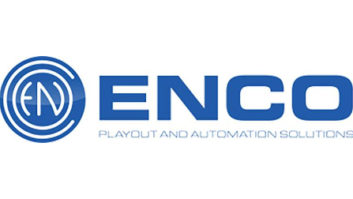Building and maintaining a client base
Jul 1, 2001 12:00 PM, By Mark Krieger, CBT
In our ongoing discussion about the business of contract engineering, we’ve touched upon the importance of managing records, resources and risks. This month, we’ll take a closer look at what it takes to accumulate and maintain the most important asset of all, a satisfied and abundant clientele.
Getting started
When launching a full-time contract business, many engineers find themselves relying on one or two key clients to carry them through the first year of operation. There’s nothing wrong with this, providing that sufficient time and energy are invested in building and diversifying the client list.
To begin the process, establish a radius that defines the extent of the geographic area over which you’re willing to extend your services. Starting from the center, compile a contact list of every radio station within that area. The Broadcasting and Cable Yearbook, published annually and available at many public library reference desks, is one of several useful resources for this information, and includes addresses, phone numbers and the names of key management personnel. After compiling the list, add any additional information you can glean from other industry sources, such as who is currently handling technical services, and pending ownership or facility changes. In short, make a point of learning as much as you can about every operation in the market, regardless of size or class.
Once you’ve refined your records and knowledge of stations within the service radius, it’s time to begin a systematic program for making contacts with each operation. To begin with, you may want to start with a direct mail campaign that includes a personalized letter of introduction, a comprehensive list of services offered and an existing client reference list. Be sure to address these directly to the appropriate decision makers. Mailings to �general manager�, or other generic titles are likely to go unread. Follow the mail campaign up with personal phone contacts. In sales parlance this is known as cold calling, and though it can be an intimidating process, it’s extremely valuable in establishing credibility and rapport with the people with whom you want to do business.
Give serious consideration to establishing a website. If you need help in getting started, you may not have to look much further than your local community college or university to find competent, reasonably priced web designers. When setting up the site initially, make it lean, well organized and information-driven. Consider posting a client list (with prior permission) for referrals, and include a page of before/after photos of past projects. This is one more good reason to own a digital camera (we’ll talk about more in upcoming issues). Value may also be added to the site by posting radio shareware, useful links, perhaps even a mail list server or message board for local broadcasters where one does not already exist. Once the website is up and running, keep it fresh. This gives visitors a reason to check in frequently. While it’s true that websites require time and effort to build and maintain properly, they can build a dynamic presence that may prove extraordinarily beneficial to your business.
Finally, don’t ignore more traditional channels. Be active in the local broadcast market by attending local SBE meetings and regional shows. These are the places to network and learn about and from your peers. State broadcaster associations also provide an excellent opportunity to make new contacts. You may also be able to purchase inexpensive professional card ads in newsletters for these organizations.
Non-traditional sources
Not every potential client owns a radio station. In fact, it’s surprising how many sophisticated audio production facilities have found their way into local schools and churches. Each of these offers a potential for maintenance contracts or upgrade projects.
The proliferation of Internet broadcasters is another possibility for client development. Locating non-traditional clients may require a significant amount of networking, as there are no readily available public domain databases to tap. For clues, check with local sound equipment suppliers and other professional contacts (remember the importance of networking) to begin building a list.
Maintaining the business relationship
Landing a client is only half the battle. Once you’ve signed a new account, you have to provide real value in order to maintain a long-term relationship. Quality work and a fair price structure are important, to be sure, but often your interpersonal communication with a client means just as much to them as the service you provide. Remember that when a competitor comes along (and they will come) it’s easy for them to undercut you on a per hour basis. If you don’t provide a face, a voice, and a forum for feedback, on what basis does your customer have to judge you other than the bottom line?
Consider the following: Let’s say you sign a transmitter maintenance contract with a client that amounts to 16 hours a month. All the contract requires you to do is perform routine maintenance, record keeping and emergency calls. If you simply perform those duties on a routine basis and nothing more, the only time the client is likely to hear from you is when there’s a problem or a late payment. This is not the kind of rapport that builds positive associations. But by extending yourself personally through courtesy calls or lunch outings, you’ll give your client a chance to socialize, ask questions, and genuinely develop the feeling that you are a part of their team. And that, more than any other single factor, is what builds a successful business relationship.
Mark Krieger, BE Radio’s consultant on contract engineering, can be reached at[email protected]. He is based in Cleveland.
Contract Engineering in September:
Billing and Collection
Getting business quick tips
- Set a service radius
- Start a direct mail campaign, followed by personal phone calls
- Establish a website
- Be active in the local broadcast market
- Seek out non-traditional sources
- Don’t neglect interpersonal communication












